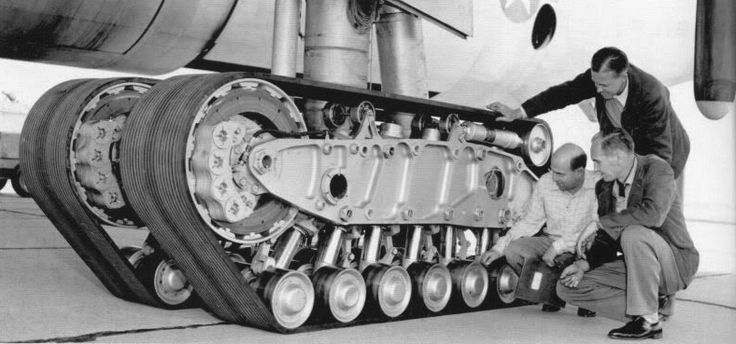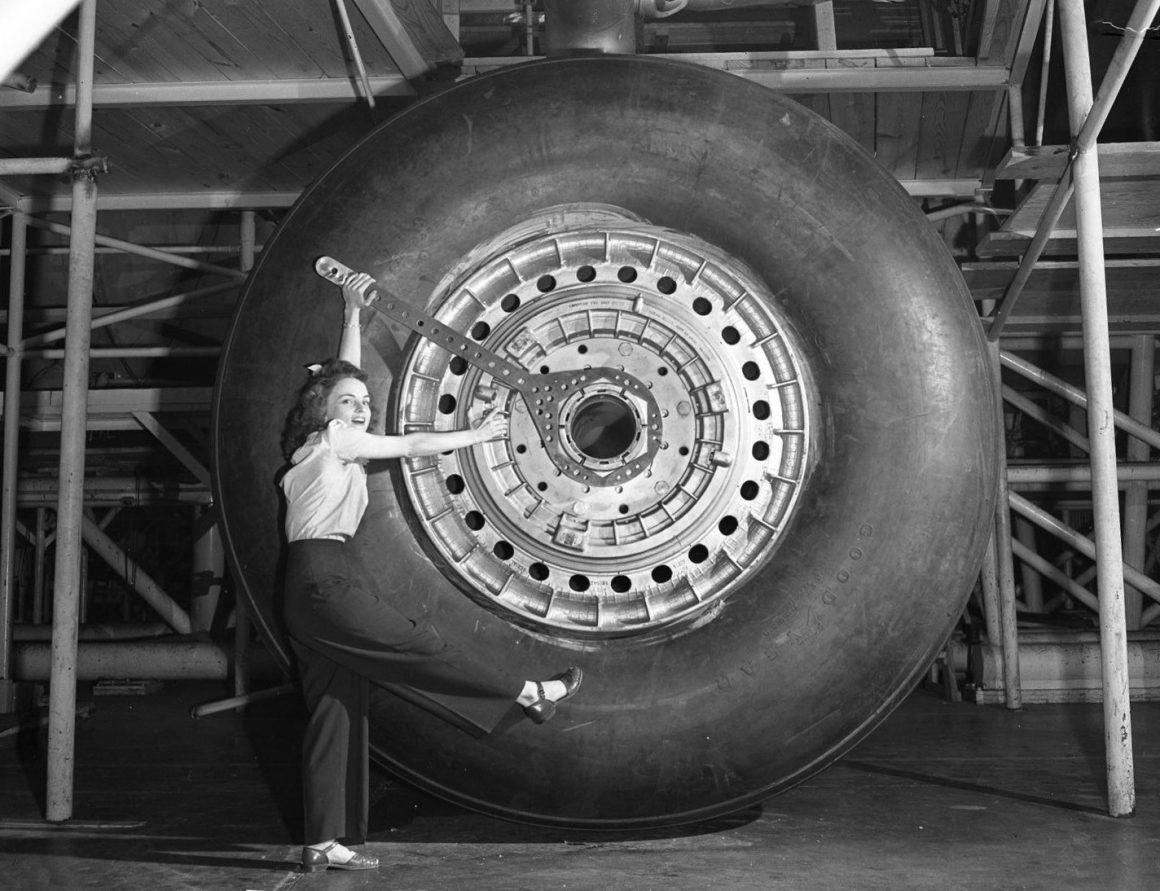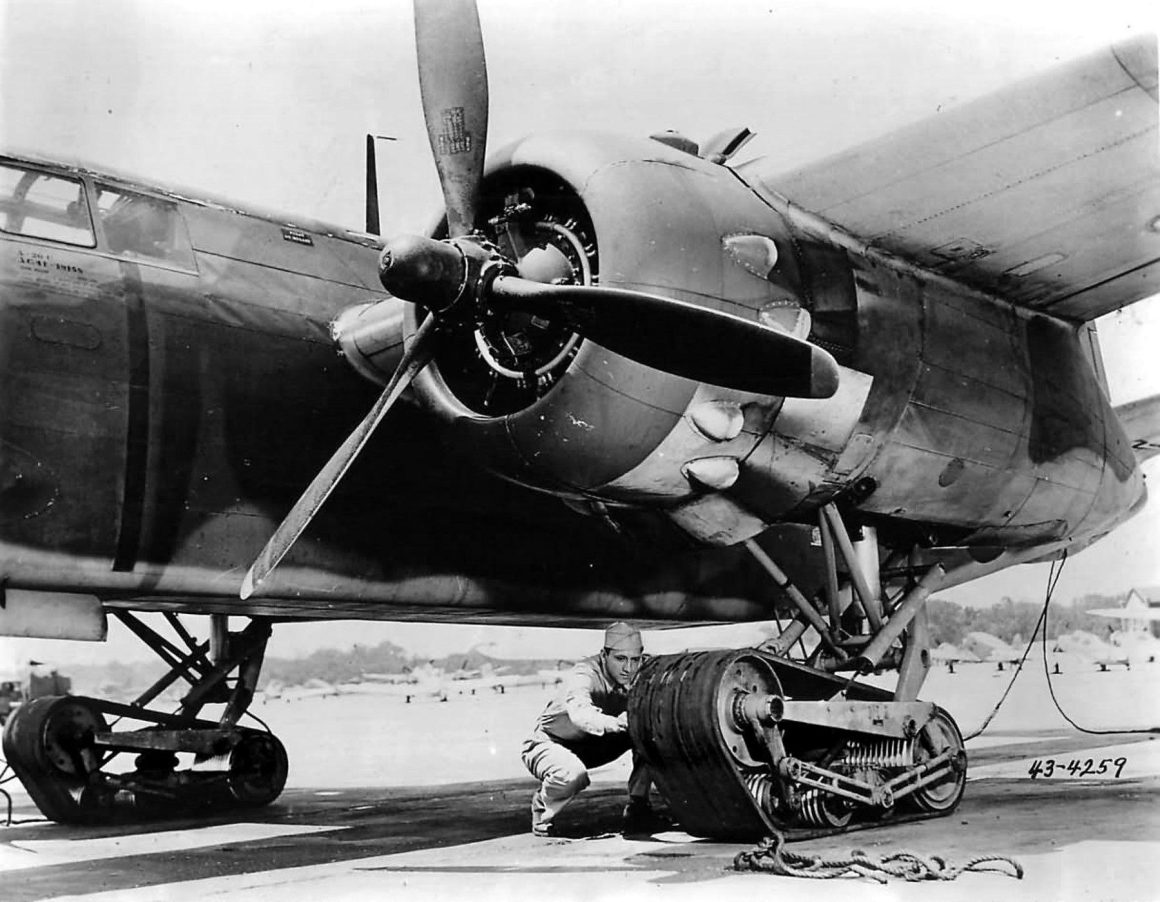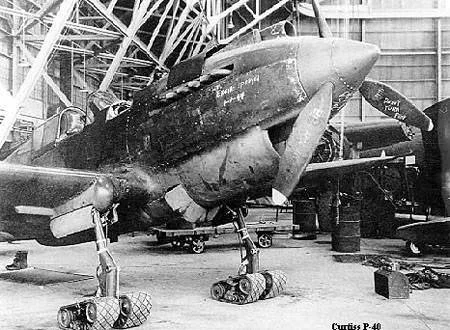On 26 March 1950, a U.S. Air Force Convair B-36 bomber took off with tank-style tracks instead of tires for its landing gear.
Military planners were concerned that the B-36, at that time the heaviest aircraft in the U.S. inventory, was too heavy to operate from most airfields. The U.S. Air Force also tested tracks on several other aircraft. However, after a long series of failures, the Pentagon abandoned the idea.
Landing Gear Track System Installed on B-36 Bomber
The B-36 was designed during WWII. The Air Force considered it a potentially valuable asset as the U.S. entered the Cold War. Massive, with a maximum takeoff weight of 409,996 pounds, the B-36 could sink into the concrete of a flightline if it sat for too long. There were also very few runways in the United States that could hold up under the aircraft’s takeoff run.

The B-36’s initial design had a single-wheel landing gear. It also used the largest tires the United States produced at the time. Goodyear manufactured the tires, which were 110 inches in diameter and 36 inches wide. Each tire weighed about 1320 pounds. The tires included 30% nylon cord construction, equal to about 60 automobile tires. For comparison, the tires on the C-5 Galaxy are 48 inches in diameter, 19 inches wide, and weigh about 200 pounds.

Problems Due to Weight and Complexity
After trying track designs on other aircraft, the Air Force installed them on a B-36 for testing. From the beginning, the system had problems due to its weight and complexity. It had two belts on each side, two inches thick in the center and one inch thick on the sides. Brass-plated steel cables reinforced the belts. The track’s gears weighed 5,600 pounds more than the conventional landing gear on the aircraft.
The test program began with a maximum aircraft weight of 250,000 pounds. The Air Force first tested its ability to taxi and then decided to conduct a flight test. The B-36, with tracks, managed to take off for its first and only flight on 26 March 1950. The flight crew later said the takeoff was “very rough and noisy.” It landed after a brief flight. However, it left “a trail of parts” behind it on the runway.
The Air Force Tested Track Systems on Other Aircraft
The Air Force eventually decided the track system was “unfit for such a heavyweight aircraft” and abandoned the project. While it ultimately failed, the concept first appeared much earlier than 1950. In November 1939, J.W. Christie, inventor of the Christie tank and representatives of the Dowty Equipment Corporation, approached the Army Air Corps. They met with General H.H. Arnold in 1939 and presented an idea to use track landing gear systems for flotation.
In 1941, Dowty signed a $20,000 contract to engineer a track landing gear for the Douglas A-20 Havoc. Dowty produced a design with an air-inflated belt, two main rollers with brakes, two smaller auxiliary rollers sprung over the part of the belt touching the ground, and a smaller roller or idler mounted under the upper span of the belt to provide constant tension.

In February 1942, the Air Force passed the design to the Goodyear Tire & Rubber Company to manufacture the A-20 track landing gear system. Under this arrangement, Goodyear, Dowty, and Firestone all produced components. They installed the rubber belted track system on a Stearman P-17, then on a Fairchild PT-19, and finally on the A-20. Initial testing proved that the system worked.
Breaking Belts and Excessive Weight
The A-20’s system was not retractable and had a conventional nose gear. Ground testing was somewhat successful, although one of the belts did fail. Another problem was that the system weighed almost twice that of the conventional landing gear. Its weight also required a 15% longer takeoff roll distance.

The Air Force continued to examine track landing gear systems. One attempt was in 1943 on the Curtis P-40 fighter for operations from beaches. Testing in 1944 resulted in the track system becoming clogged with sod, mud, and snow, which stretched the belt. They also found the tracks did not enable the fighter to travel over ditches and other obstacles.
The Air Force gave up on using tracks on the P-40 but did test them, although with no success, on the C-82 and B-50. In 1948, the gear on the C-82 experienced structural failure during testing in sand, and the main gear track belt fell off. On the B-50, engineers discovered the track interfered with the defensive gun system. Goodyear, tasked to produce the belts, had trouble making them strong enough for the aircraft. They found they could not use the belts above 70 miles per hour.

Eventually, during flight testing, the tracks had bearing failures, and the system had maintenance difficulties. The Air Force did not continue testing the tracks on the B-50.
Modernization of Airfields Eliminated Need for Tracks
The Air Force then considered using tracks on the B-36, but equipment failures were not the only thing that led to its ultimate abandonment. In the years following World War II, airfields capable of handling heavier aircraft were being developed, so tracks would not be necessary.
Curtis and the Air Force also changed the B-36’s design to a four-wheel landing gear setup instead of the original single-tire configuration.
Total
0
Shares
Credit: avgeekery.com










